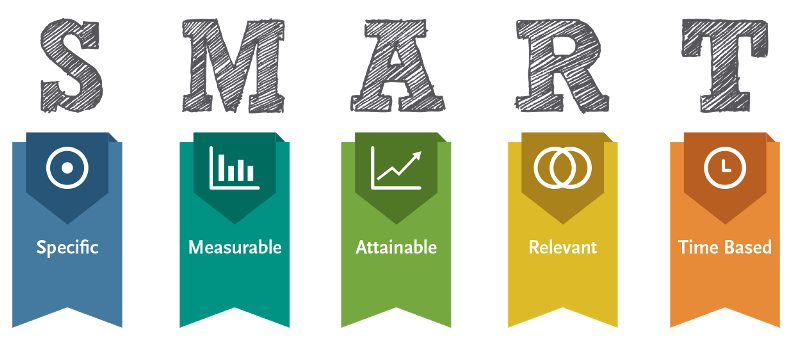Bad habits are hard to break, but they can be done. It just takes a significant amount of time and effort. It also helps if you go about it productively. Whether you smoke, drink, bite your nails, or snack too much, you can drop the habit. Here are some tips on how to form new habits and make them stick in 8 steps.
*We earn a commission for products purchased through affiliate links on our site.
How to Form New Good Habits and Break Bad Habits
Identify Bad Habits
First, you need to identify the bad habits you want to change. For some people, this is easy. For others, they need to examine their behaviors to recognize their bad habits. After identifying bad habits, you should learn more about why they are bad for you.
The 10 common bad habits:
- Smoking & drinking
- Procrastination
- Trying to control everything
- Constant complaining
- Too many processed foods
- Not getting enough sleep
- Poor posture
- Overspending
- Gambling
- Staying up late
Clarify SMART Goals

Knowing what habits you want to change brings you to the next portion of the process: creating goals. When creating goals, you want to make them SMART goals. SMART is an acronym that stands for:
- Specific
- Measurable
- Attainable
- Relevant
- Time-based
Using this acronym, you can create goals directly related to your ultimate end goal. You will also create specific goals with measurable progress so that you can see tangible results. You also want to set a reasonable deadline in place to give you a good time to reassess your progress and any changes you may need to make for your next deadline.
You can get more information about SMART goals here.
How to Make New Habits Stick in 8 Steps
Now, let’s take a look at how to make them stick!
Step 1: Set Yourself Up For Success
Your environment plays a large role in how well you will succeed at your new goals. Set yourself up for success at the very beginning.
Start by getting rid of any temptation in your home and workplace. You can also reduce time spent at certain places or with certain people if they encourage bad behavior or act as triggers
Step 2: Think Positive
A positive attitude can make the difference between a successful attempt to break bad habits and an unsuccessful attempt to break bad habits. You can’t go into it thinking that you will fail.
When you believe in yourself, you are more likely to achieve more ambitious goals. However, some people struggle to maintain a positive mindset. This is when it’s best to fake it until you make it.
Read positive affirmations, tell yourself that you believe you can achieve your goals, and surround yourself with positivity.
Soon, your mind will believe the positive thoughts you keep repeating to yourself.
Step 3: Document Everything

When things are written down on paper, you are forced to look at the facts in an undeniable way.
Document your journey every single day in a small journal. This journal should focus on your personal goals more than anything else.
If you are working on eating habits, log everything related to what you eat. Write down what you ate, when, and any exercise.
You may also log your weight in your journal every day. Having the facts in front of you will give you the opportunity to accurately determine if you are making progress and what things are and are not working for you.
Step 4: Hold Yourself Accountable
It’s easy to start change. However, it’s more difficult to complete it. It’s even more difficult to maintain the change. Start holding yourself accountable.
You can start with a simple reward and punishment-based system. If you do reach your goal, you get a reward. If you do not reach your goal, you get a punishment.
However, it can be easy to lie to yourself or just give up altogether. Many people perform better when they have someone else to help hold them accountable.
Talk to a trusted friend or colleague about your goals. They can help keep you in check when they see you starting to slip. If you don’t have a friend to turn to, look online for people with similar goals or people who make a living holding people accountable.
Step 5: Allow Room for Error
No one is perfect, and you shouldn’t expect yourself to be perfect. The goal is constant improvement.
If you are working toward breaking bad eating habits, you need to forgive yourself if you have a donut one morning. The idea is t be honest to yourself and anyone else involved in your transformation.
Strive to improve each and every day. With this mindset, you may still have a donut a week at first. However, with time, you may change your habits and only have a donut a month. This progress leads to even more progress.
Step 6: Don’t Give Up
One mistake people make is that they give up after they make a mistake. Don’t throw away your progress after one mishap.
Instead, work harder not to slip again. Forgive yourself and start over again instead of giving up completely.
For example, you may have had a donut for breakfast. However, that doesn’t mean you need to eat a fattening burger with fries for lunch. Get a salad and move forward.
Step 7: Find a Role Model
There are a lot of bad examples out there that promote bad habits. However, there are a lot of good role models out there, too.
Find a role model that you admire, especially when it comes to the things you want to improve in your life.
Learn what your role model does to achieve their goals. In some cases, you may even be able to interact with your role model and ask them to be a part of your journey.
Step 8: Celebrate Accomplishments

You deserve to celebrate the little milestones you reach on your journey. These celebrations will make you feel accomplished. Plus, you will be more encouraged to make it to the next celebration.
The celebration doesn’t need to be extensive. You can celebrate with a small piece of candy or a trip to the nail salon.
You get to choose whatever small way best rewards you for your success while not going overboard or setting back your progress too much.

Forming new habits can feel like you are changing the way you think, and that’s because the two are very much related. Of course, this takes time. Be patient with yourself and stick to your goals instead of giving up. While progress may be slow at first, you will notice changes in your life before you know it. Soon, you will be making better choices with your own new instincts.







Comments are closed.